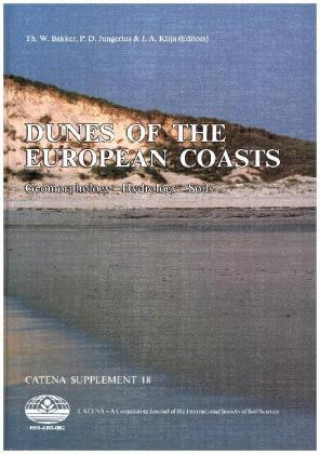
Livraison
Guide d'achat
16 124 785 livres à l’intérieur 175 langues






Afficher toutes les langues (175)
2 047 049 livres numériques à l’intérieur 101 langues






Afficher toutes les langues (101)





Cela ne vous convient pas ? Aucun souci à se faire ! Vous pouvez renvoyer le produit dans les 30 jours
 Bon d’achat
n'importe quelle valeur
Bon d’achat
n'importe quelle valeur
Impossible de faire fausse route avec un bon d’achat. Le destinataire du cadeau peut choisir ce qu'il veut parmi notre sélection.
Dunes of the European Coasts
 Anglais
Anglais
 188 b
188 b
 common.delivery_to
common.delivery_to
Politique de retour sous 30 jours
Ceci pourrait également vous intéresser


With the integration of the European Community there is a growing awareness among scientists that landscapes which the participating countries have in common should be studied within a European framework. One of these landscapes is formed by the coastal dunes found from northernmost Norway to the extreme south of Spain. Together with other coastal areas their economic and ecological importance is great. Moreover, man-induced or natural threats, such as large-scale construction, reclamation or sea level rise, ask for continual measures based on scientific insight. Awareness that the coastal zone merits communal concern has led to the recent foundation of two organizations: the European Union for Dune Conservation and Coastal Management (EUDC) and Eurocoast. Both are active in pooling knowledge of the coastal zone, organizing meetings, and promoting other related matters. This Supplement of CATENA should be seen as another effort to stimulate interest in one of the most striking aspects of the coastal zone: the dune landscape. The diversity of dune landscapes is astonishing. There is probably no other type of landscape in the world which in its two main elements, land form and land cover, shows so much variation over such short distances. The spectacular variety of form elements is above all a consequence of the combination of wind and sand, with the former representing a process capable of acting independent of gravity, and the latter constituing a substrate which deforms easily. The variety of land cover is related to plant-growth conditions which change drastically over short distances depending on differences in microclimate, groundwater regime, soil type and distance from the sea. Added to this there is the diversity caused by humans who intervene in a number of ways in their efforts to adapt the landscape to their needs. These needs spring from the many functions the dunes can have for society: recreation, building, nature conservation, protection against the sea, agriculture, water extraction, etc. Thus far, coastal dune landscapes have received little attention from the scientists who usually fill the contents of CATENA with contributions concerning "soil science, hydrology and geomorphology, focusing on geoecology and landscape evolution". It is mostly from botanists and vegetation ecologists that we have gained some understanding of dune ecosystems. They were among the first who realized the importance of environmental stress to the development of dune-building plants, thus drawing our attention to abiotic processes active in the dune ecosystem. The fact that few geomorphologists and pedologists have shown interest in the coastal dunes is amazing considering that dune landscapes form one of the few remaining natural regions not being located in remote and inaccessible corners of the world. Moreover, all sorts of geomorphological processes typical of widely different climates are active here at a truly exceptional speed. In this respect coastal dunes can be regarded as a genuine 'field laboratory'. The study of soil formation in dunes is much neglected even though pedological processes here are far more natural than are those found in agricultural regions with their man-made surface horizons. Those active in the dunes have noticed to their satisfaction that their studies are highly appre- dated by the managers of dune terrains, owing to the relevance that their findings have to nature conservation and other dune functions. Coastal dunes have scientific value to soil scientists, hydrologists and geomorphologists in at least two respects. First of all, there is a great need for a better understanding of the abiotic part of the ecosystems as a complement to the ecological research of biologists. Such studies should be carried out at three levels: those of individual plants (autecology), the entire vegetation complex (vegetation ecology), and the landscape (landscape ecology).
À propos du livre
 Anglais
Anglais


 Contact
Contact Comment faire ses achats
Comment faire ses achats
















